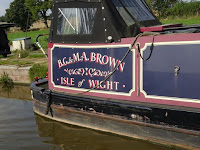 |
| A good English Brew! |
England knows how to do beer. They
therefore have also figured out how to serve it . . . the answer is simple . .
in pubs.
All along the canals we explored during our
first two weeks, there were pubs strategically placed at junctions, towns or
beside the locks. Anywhere the boatsmen would have had to stop was a good spot
to put a place to get a beer. We did manage to try out a few on our canal trip.
Here in Chester however they have taken the
pub scene to a whole new level. There are over 50 pubs within walking distance
of
the apartment. There is one right next door, two up the street, and two
immediately across the bridge. During our walks around Chester I am constantly
finding new and interesting pubs.
 | |
| A lie . . . these two do not know Beer |
The names of course sound like old English
Pubs.
Bear & Billet
Falcon
Cross Keys
Old Queen’s Head
Pied Bull
Brewery Tap
Liverpool Arms
Pitcher & Piano
George & Dragon
 | |
| The Brewery Tap |
 | |
| 700 Year Old Cellar |
My intent was to work my way through them,
but OMG there are too many. I went to the Falcon on a recommendation of someone
I met and the owner gave us a tour of the 700 year old cellars, and I saw the
200 year old oak barrels that he pulled my Ale from. I also had a pint in the
Brewery Tap which claims to be 600 years old, and today on the way back from
visiting the ruin of the original Chester Cathedral we stopped at the Cross
Keys for a Green Monkey Lager in what they claim to be the 6th
oldest pub in the world. Ok, I am getting the idea that age here in Chester may
be a relative thing . . .
How am I ever going to be able to enjoy the
Mic Mac Tavern with its ancient 6 month history?







































